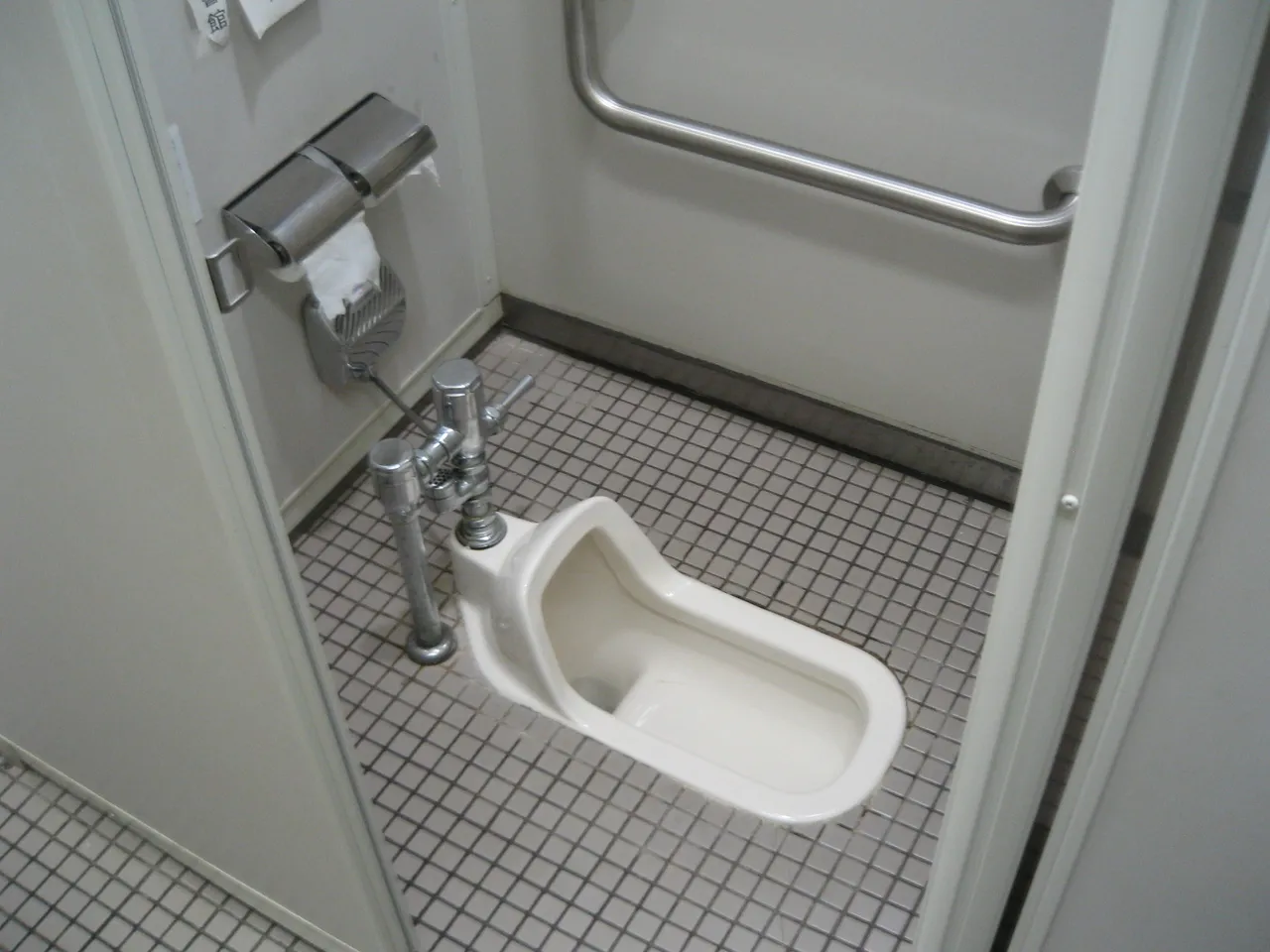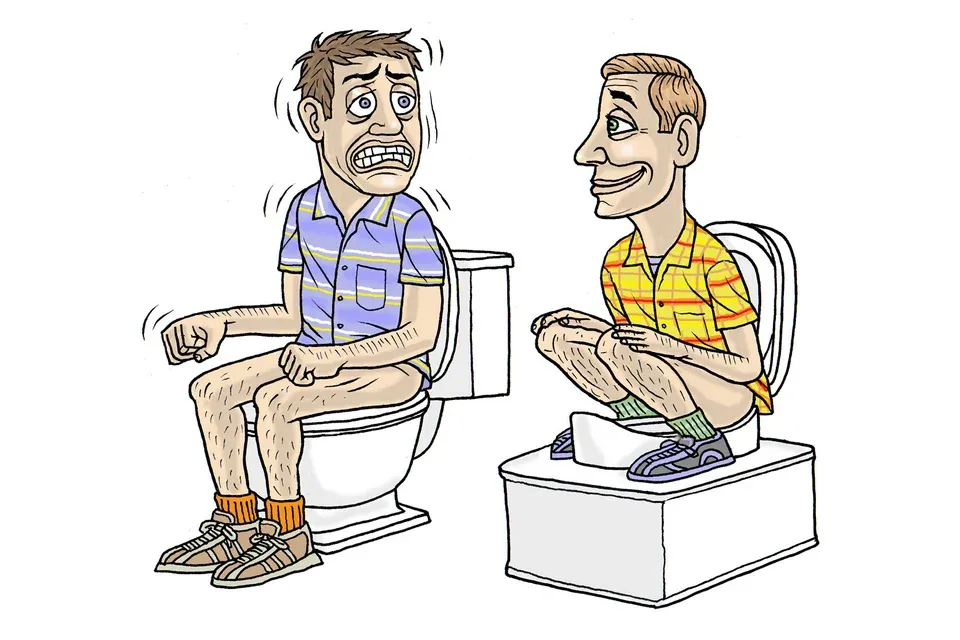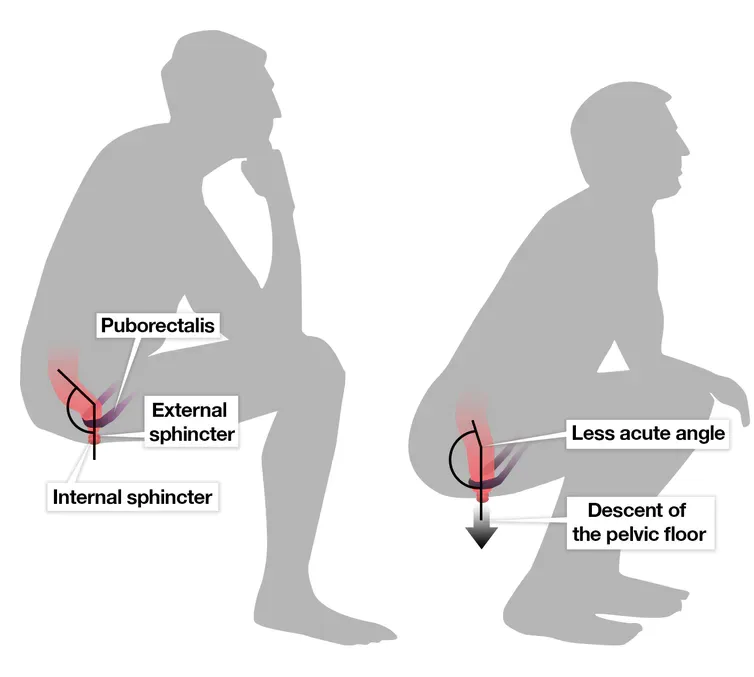
Many people today are unaware that sitting toilets pose a danger to the health and well-being. Today a growing number of medical experts say humans are mean to squat to remove it all. It comes down to positioning squatting release pressure on the rectum and makes it easier to defecate. Many doctors believe that sitting in a western-style toilet causes you to strain against your muscles.
Many physicians believe that squat toilets minimize the chances of constipation, hemorrhoids, and even bowel cancer. Nevertheless, evidence indicates that bathroom posture and a lack of dietary fiber play a vital role in these ailments. According to a recent study from Stanford University, squatting is the correct and suggested way to go to the toilet, so what is the big difference between the two positions? Sitting in a modern Western sit-down loo places your knees at a 90-degree angle to your abdomen while squatting toilets place your body at a 35-degree angle.
Dov Sikirov observed 28 healthy volunteers who document how long their bowel movements took and how painful they were. The volunteers stood on toilets of varying heights (42cm and 32cm) and squatted over a plastic tub. They collected data for six successive bowel movements in each pose. Six participants in Japanese research had their rectums filled with a contrast solution. They expelled the fluid while sitting and squatting. The researcher captured their bowel on film using live radiography from behind a mirror. The researchers discovered that the anorectal angle widened further in the squatting posture. Participants also squatted with less abdominal pressure.
When a person squats, the action of the thighs supports the colon and causes the pressure inside the abdominal cavity to increase. It results in natural pressurization of the colon, which facilitates waste evacuation. In a squatting position, we naturally suspend our pelvis like a cradle, and the bottom opens up to expose the anus. It straightens out the kink in the anal canal and directs it to the final passage between the rectum and the anus. It is simple for waste to pass out absolutely and quickly. However, the kink, or curve, between the rectum and the anal canal is not fully open in the sitting position. As a result of the colon deprived of any support from the face, a person using the seated position for defecation need to hold their breath, strain, and push downwards for waste evacuation, which can never be complete.

A squat toilet (Wikimedia)
It causes the accumulation and hardening of seal wastes in the colon's lower regions. The widening of the buttocks, straightening of the anal canal, a beneficial rise in the abdomen, and compression of the colon will only occur when squatting; the result is smoother, quicker, and more total bowel movements when standing because the pubic talus muscle completely chokes the rectum. When we sit, it partly chokes the rectum that causes a restriction in the bowel flow. When we squat, it fully relaxes the pubic talus muscle. Sitting in modern toilets causes straining, which is dangerous. It can trigger constipation.
According to the World Health Organization, approximately 12% of the global population suffers from constipation, which we described as having a bowel movement less than three times per week. Constipation is unpleasant and can be harmful to the colon in the long run. Water extraction is one of the processes that take place in the colon. When our colon extracts water from its content rapidly, the conversion of liquid waste to solid waste speeds up. If we can't remove our feces on a regular and complete basis, it extracts too much water that causing waste to become too dry and cemented to the colon's walls.

Illustration by Mark Alan Stamaty
If it remains in the colon for an extended period without being removed, the toxins found inside it may circulate back into the blood. Furthermore, stools that are stuck in our colons may produce even more toxins. Hemorrhoids are a form of hemorrhage. According to the Mayo Clinic, hemorrhoid patients should avoid long periods of standing or sitting, especially in the toilet. It has the potential to increase the pressure in the veins of the anus. According to John Hopkins Medicine, by the age of 50, about half of all adults have had hemorrhoid symptoms. Hemorrhoids, often known as piles, are swollen and inflamed veins in the your anus (Lol! I initially encoded it as Uranus) and lower rectum. It is due to straining during bowel movements. Besides, the increased pressure in these veins during pregnancy causes hemorrhoids, among other things.
Colorectal cancer has high mortality that is widespread in the developed world but rare in developing countries. Each year, approximately 150,000 people in the United States are diagnosed with colon cancer, although the disease is the fourth leading cause of cancer-related mortality worldwide. Many scientists have been looking for an explanation for this phenomenon. They overlooked a significant connection between toilet posture and colon cancer. As the West sits, people in the developing world squat for waste removal.
It helps to keep our health in good condition if we remove our feces. Many studies linked fecal accumulation in the colon to diseases, such as colon cancer, urinary difficulty, and infections. Urinary discharge is smoother and faster when women squat to urinate. Women can fully drain their bladder when squatting rather than sitting or hovering. Squatting can help minimize the incidence and severity of urinary tract infections.
 Illustration from The Conversation
Illustration from The ConversationPelvic floor disorders are due to straining in the toilet, as sitting puts a lot of pressure on the inner rectangle of the colon. Squatting for bowel removal will protect the pelvic floors. When the appendix is in the squatting position, the right thigh pushes against the right lower abdomen. Besides, men may develop pelvic floor disorders. The squeezing action forces waste from the sacrum away from the appendix and the ileocecal valve and up to the ascending colon, keeping the appendix's channel opening clear. In the sitting position, the ileocecal valve remains firmly closed.
We can't clear the sacrum by squeezing it against the right thigh because the colon isn't ready for bowel evacuation. It results in holding one's breath must struggle and force downwards with the diaphragm. Our operation inflates and presses the sacrum backward towards the appendix and the ileocecal valve in the wrong direction. We're like squeezing a tube of tuber toothpaste in the bottom causes it to inflate. Backpressure can cause waste forced into the appendix, which can be fatal.
Squatting allows for quicker, simpler, and more total removal. It aids in the prevention of fecal stagnation, which is a contributing factor to colon cancer, appendicitis, and inflammatory bowel disease. It keeps the nerves that regulate the prostate, bladder, and uterus from being stretched and weakened. It keeps the ileocecal valve between the colon and the small intestine firmly closed. This valve is not supported in the traditional sitting position and often leaks during our bowel, contaminating the small intestine's relaxation. The rectus muscles, which usually choke the rectal to maintain continents, use the thigh to stabilize the colon and avoid straining. Chronic straining on the toilet can result in hernias, diverticulosis, and pelvic organ prolapse.
The relation between toilet posture and our bowels may sound like Internet quackery, but there is now scientific evidence that defecation posture influences the body. The more extreme claims about squatting, such as that it prevents cancer, have yet to be proven. However, when it comes to hemorrhoids, a debilitating narrowing of the veins of the anal canal that affects us, recent evidence shows that we need to get our butt off the toilet.
Note: The cover image is created by the author using Canva.
References
- Don’t Just Sit There! How bathroom posture affects your health.
- Sitting Toilets Pose a Danger to Health
- What Is a Squatty Potty?
- 5 Problems With Sitting On Your Toilet
- What’s the best way to go to the toilet – squatting or sitting?
- Health promotion and prevention of bowel disorders through toilet designs: A myth or reality?
- Squatting and Risk of Colorectal Cancer:A Case-Control Study
- Toilets of the future, and the art of squatting
- The Squatty Potty Revolution
- Mayo Clinic: Hemmoroids
- What are hemorrhoids?
- 10 Ways You Never Knew You Were Using the Toilet Wrong
- Your toilet sitting position is giving you constipation! Know how to correct it
